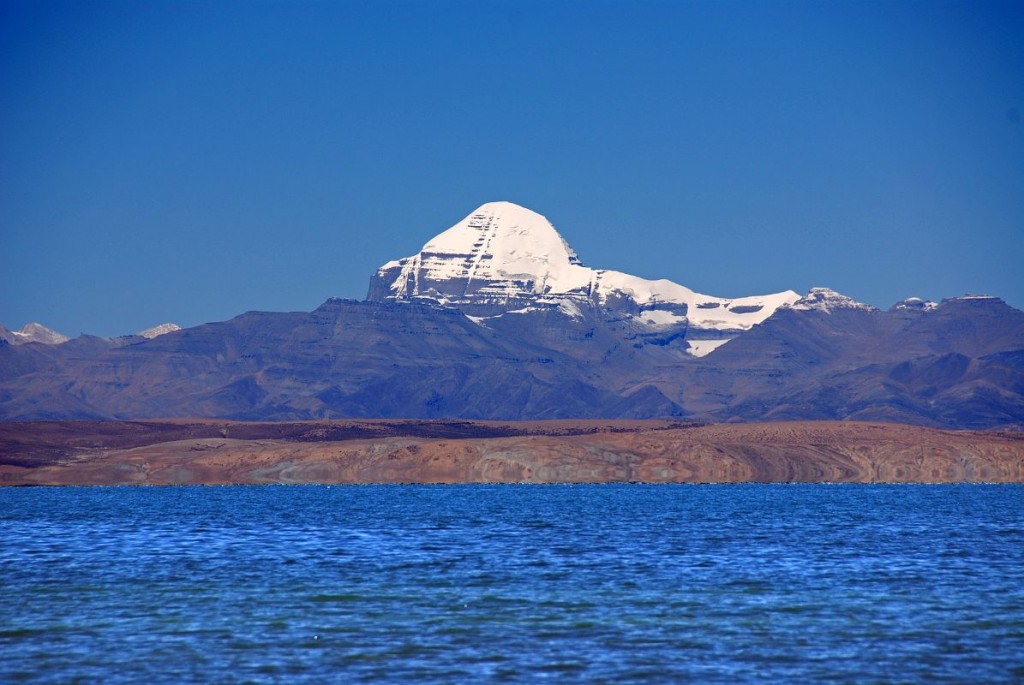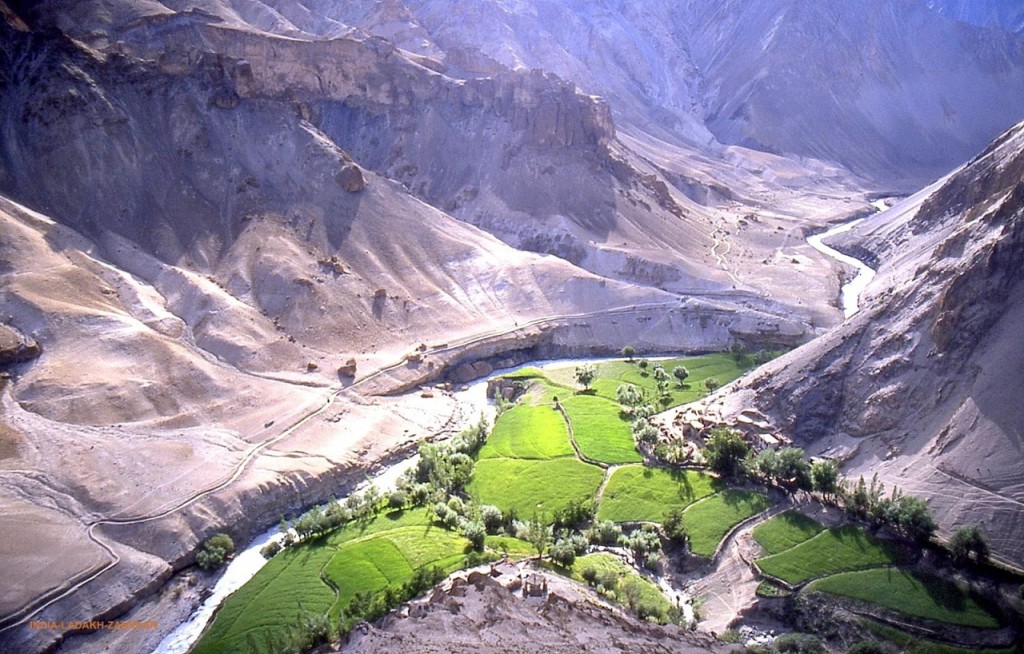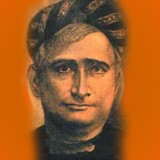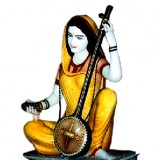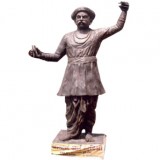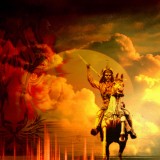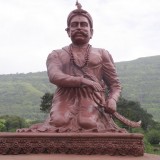Atop the rooftop of the world – standing before serene waters of Lake Mansoravar on the Himalayan Plateau the crisp mountain air was broken with the cries of ‘Har Har Mahadev’. A band of Hindu warriors, bloodied and battered a thousand miles from their homes in the Jammu kingdom looked with grim satisfaction on the culmination of a successful campaign of war under the leadership of their inspirational leader General Zorawar Singh Kahluria.
The northern Indian kingdom of Jammu was ruled for my centuries by various Hindu clans and in themed 19th century was ruled by the Gulab Singh. For many centuries the Jammu kingdom had maintained a solid independence from the empires of northern India. Nominally allied to the Sikh kingdom of Lahore the warrior clans of the Dogras sought opportunities to the north of their kingdom.
Zorawar Singh initially conquered the hill region of Kishwar from its Nawab and the speed and ease of the conquest encourages further ambitions. The majority of Northern India was by this time under the heel of British Imperialism and the areas to the south and west were under the control of their allies the Sikhs. In 1834 he led his Dogra warriors into the remote and previously thought inaccessible regions of Ladakh which today forms part of the Jammu and Kashmir state of India. After defeating the Botis in a bitter engagement his added Kargil to his conquests. The Ladakhis gathered together a large force with assistance from the Chinese imperial army and despite being cut off from his base and with limited supplies Zorawar Singh managed to inflict a decisive defeat on his enemies under the leadership of the Gyalpo.
Although nominally allies the Sikh Kingdom was alarmed by the increasing power of the Dogras and under the instigation of Mehan Singh, the Sikh governor of Kashmir the Ladakhi again resumed the conflict with the Dogras the following year in 1836. However making a lightening march he managed to surprise and destroy the Ladakhi army and inflict a devastating defeat on them thus adding the vast Ladakhi regions to India.
To the north of Ladakh lies Baltistan (in modern Pakistan). General Zorawar Singh now turned his hardy mountain troops in this direction. The Nawab, Muhammad Shah had attempted to help the Ladakhis in the previous battles and in 1841 faced bitter retribution from Zorawar Singh and his Dogra warriors. Despite facing the bitter cold and extreme hardship the Dogras managed to invest and conquer the region in the same year. The fighting abilities of Zorawar Singh allowed the Dogras to proceed to even further ambitions towards Central Asia. Once again however the Sikhs complained to the Dogras that Zorawar Singh was pushing his conquests to areas which were their allies and thus Zorawar Singh turned his attention to the vast kingdom of Tibet to the north. Under the rule of Chinese Empire the plateau of Tibet was also home the sacred lake of Mansoravar and Mount Kailash the abode of Lord Shiva. In 1841 he divided his forces into three columns and headed into the vast unknown of the mighty Himalayas.
After a number of fierce engagements the Chinese troops fled before the ‘Shen Pa’ their name for the Hindu Dogra warriors and fighting both local resistance and the unsparing Himalayan weather Zorawar Singh and his soldiers reached their goal and to complete their pilgrimage. Author Dr Alex McKay further mentions in his book The History of Tibet,
‘The occupation Of Tibetan areas west of the Mayum pass was completed by the middle of September. General Zorawar Singh made proper arrangements for guarding advance posts towards the Mayum pass and other passes by posting his own contingents. He then returned to Tirathpuri where he intended to pass the winter.Thus the Dogra General conquered about 720 km. Of the Tibetan territory (linear distance) in about three and a half months .The first thing Zorawar Singh did after the conquest Of Misra was to take a holy bath in the lake Manasarovar and offer a golden idol at the Kailash temple On The mobilisation of his troops into Tibet he had already announced his intention to perform a pilgrimage of the Hindu holy places of the’ Kailash-kshetra. He now proudly fulfilled that resolve. Thus, by fighting out his way to these holy places and earning the merit of the pilgrimage of Kailash, to which the heroes of the Mahabharata had also retired after attaining the glory and fame in the battlefield of Kurukshetra, General Zorawar Singh had earned both sanctity and renown. He had achieved the height of fame.’
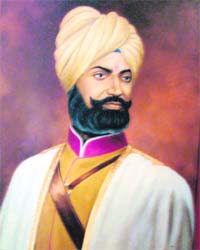 Now standing over 500 miles from his home base and rapidly facing mounting numbers of enemies he turned to return to his home. However by now the enemy had reinforced their strength in vast numbers and in the bitter winter of 1841-1842 suffering from a collapse of their supply lines, facing the relentless Himalayan winter and facing the Chinese/Tibetan forces on all sides the Dogras began to fight their way home.
Now standing over 500 miles from his home base and rapidly facing mounting numbers of enemies he turned to return to his home. However by now the enemy had reinforced their strength in vast numbers and in the bitter winter of 1841-1842 suffering from a collapse of their supply lines, facing the relentless Himalayan winter and facing the Chinese/Tibetan forces on all sides the Dogras began to fight their way home.
With each step being fiercely contested it was only the matchless general ship and valour of Zorawar Singh that maintained the discipline and strict order of his army. Inspired by the success of their holy pilgrimage to the sacred lake the Dogras kept at bay the forces of their enemies until brought to bay at the Battle of To-yo in December 1841.
Wounded by bullet in his right shoulder the general continued to rally his troops until in the thick of the fighting a spear was thrust into his shoulder – Wounded he was dragged out from the struggle by his soldiers and a shot while after died from his injuries.
The Chinese-Tibetan attack then moved forward but was resisted by the Dogra general Mehta Basti Ram – the Chinese then followed up their success by an attack on Ladakh but there faced a severe defeat at Dragntese when following the inspirational ideal of Zorawar Singh the Dogras managed to outflank their enemies and by damming the river managed to flood the enemy forces – At the Battle of Chushul the Dogras inflicting a decisive defeat on the Chinese and executed their general to avenge the death of Zorawar Singh
So ended the life and career of one of India greatest and yet least known warriors. His intrepid courage and general ship earned him the title of the ‘Napoleon of India’ from the Europeans His exertions far beyond the confines of modern India into the vast steppes and mountains of Central Asia were an example of the intrepid Hindu spirit and ethos which has allowed the Hindus to emerge from millennia of history.
Forgotten memorial to General Zorawar Singh where he died.
Toyo, Taklakot, Tibet – that is the hallowed place where stands a dilapidated Samadhi of a brave man called General Zorawar Singh, a Kahluria Rajput of the 19th century India. He was born in 1786 in the Kangra district but his bravery blossomed in the Dogra army of Raja Gulab Singh of Jammu.Brigadier Chitranjan Sawant
(23456)

